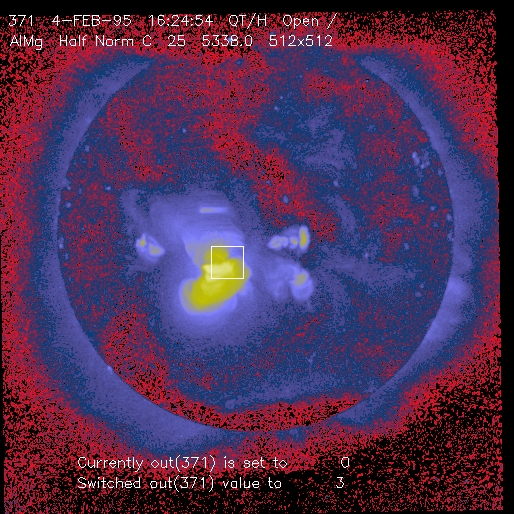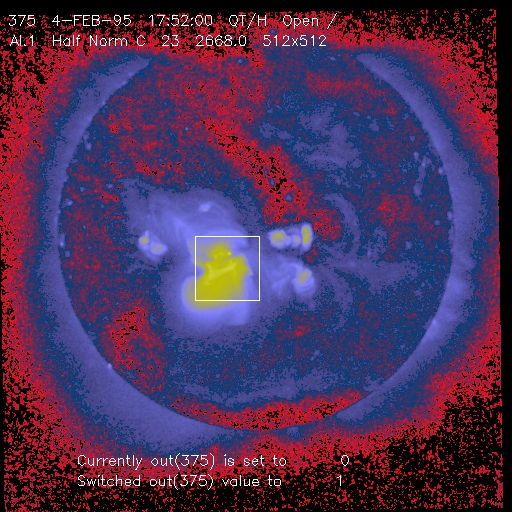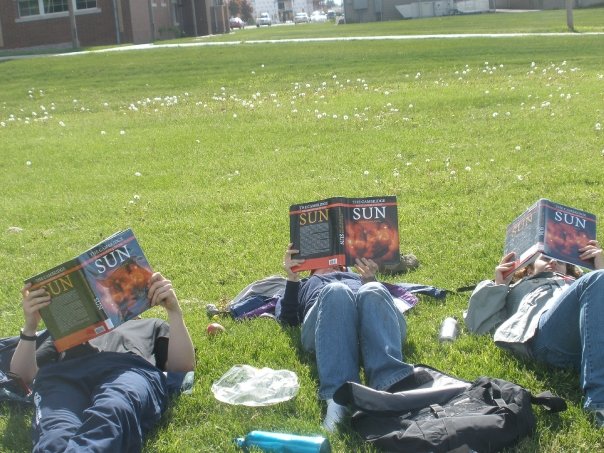
Meghan's Daily Log
July
24, 2009
My program actually works and produces graphs at the end. Whether they have any scientific credibility has yet to be determined...
Problems:
1) Some of the KP magnetograms have a bscale factor of 0, which cannot be correct. Currently I have set these to unity.
2) For 2 of the active regions the tess program returns only one tess'd fragment in the magnetogram and then the program burps. I can either change the threshold values to avoid this or can alter the program so that if there is not both a positive and negative centroid it will just have a default boxcar kernel dimension
3) I don't think that standard threshold values for ALL magnetograms produces realistic numbers of flux fragments and PILs...
There needs to be a cleaner way to display this, but for the time being here is proof I did some work this week:

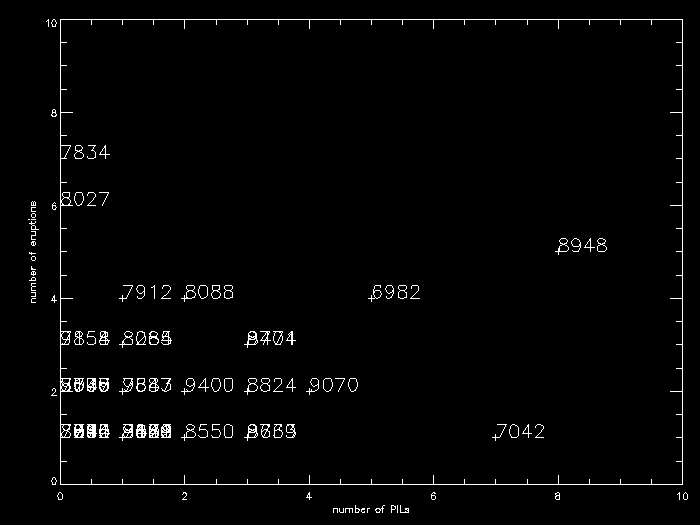
July 17, 2009
NOAA Active Region 6982
December 26, 1991
Arcades: 0
Cusps: 2
Ejecta: 2
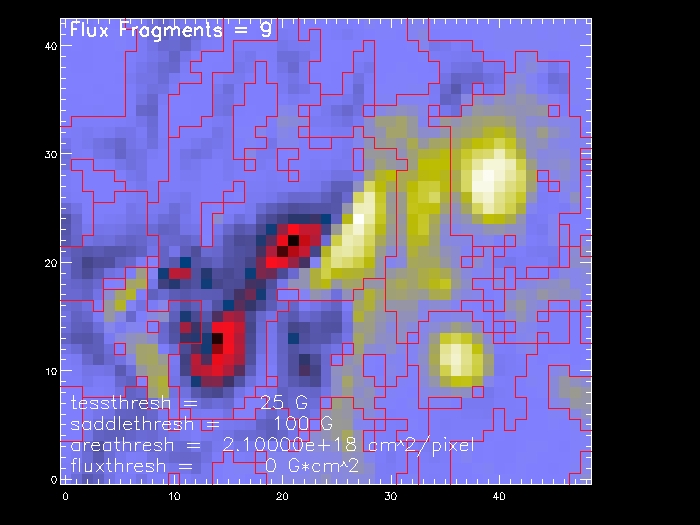
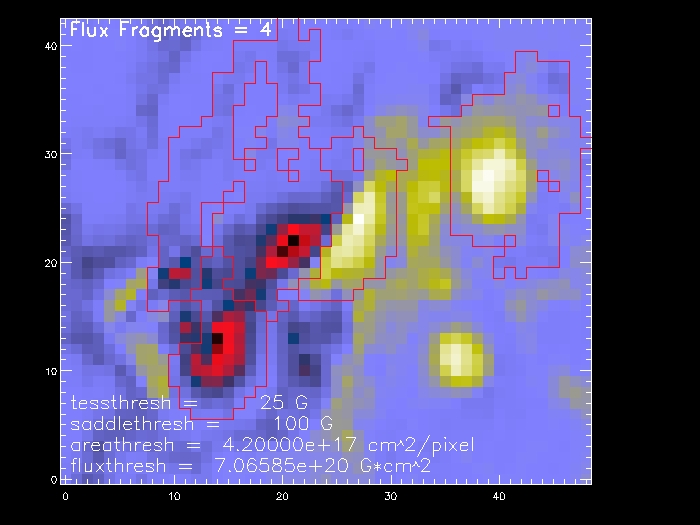
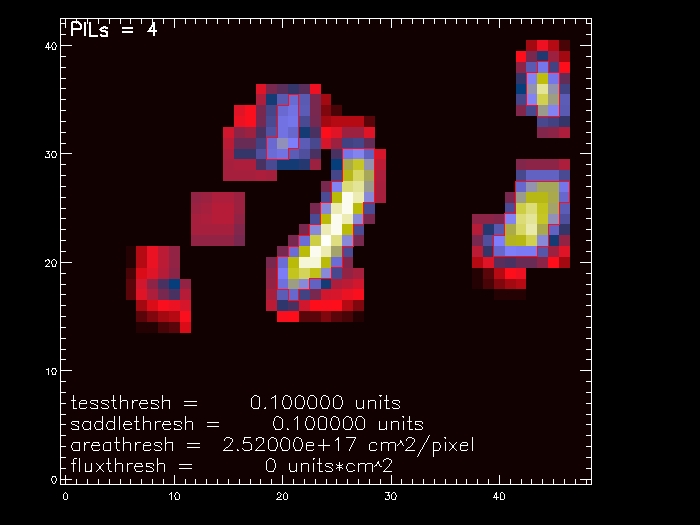
NOAA Active Region 7912
October 16, 1995
Arcades: 1
Cusps: 1
Ejecta: 2
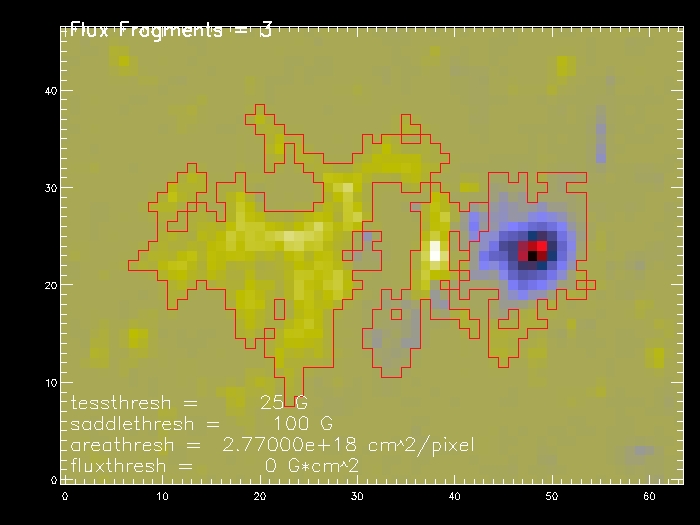
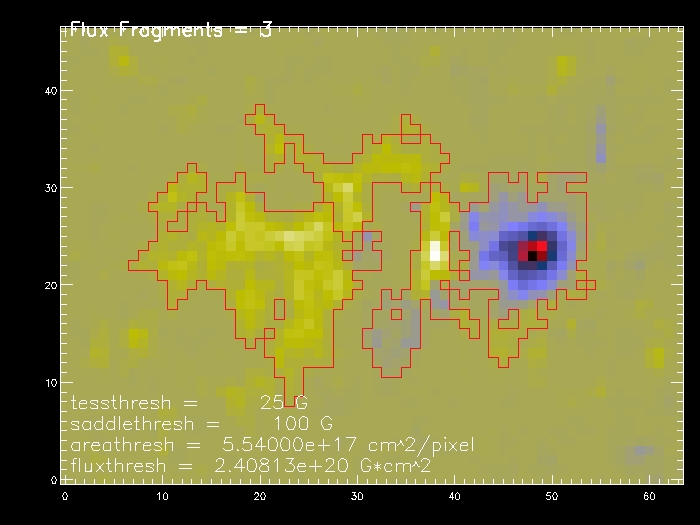
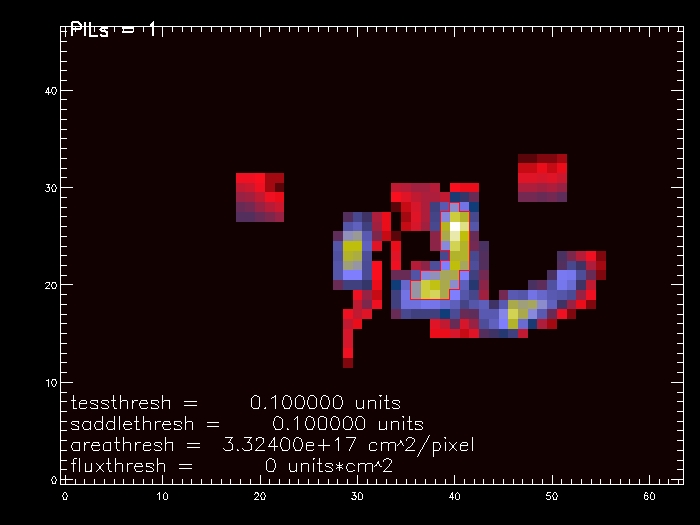
NOAA Active Region 8955
April 17, 2000
Arcades: 0
Cusps: 1
Ejecta: 0
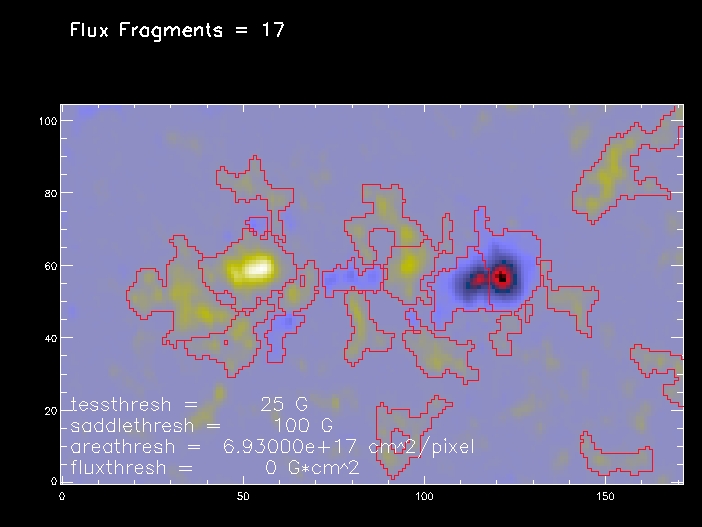
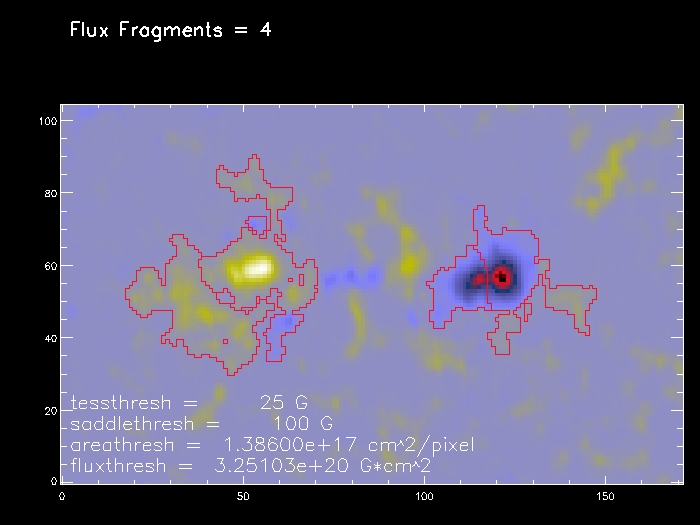
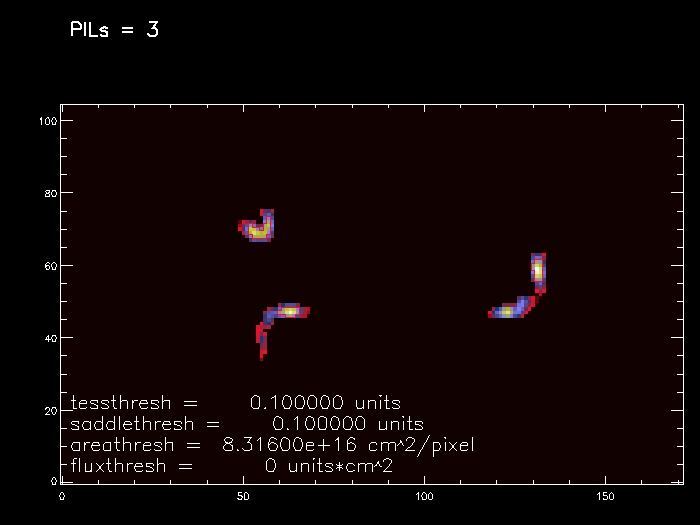
July 10, 2009
NOAA Active Region 7773
September 5, 1994
Arcades: 1
Cusps: 1
Ejecta: 1

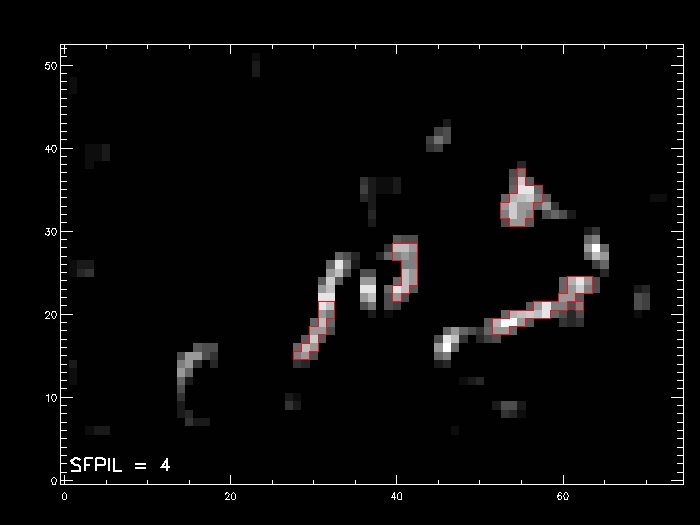
NOAA Active Region 7834
February 5, 1995
Arcades: 3
Cusps: 4
Ejecta: 1
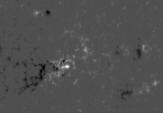
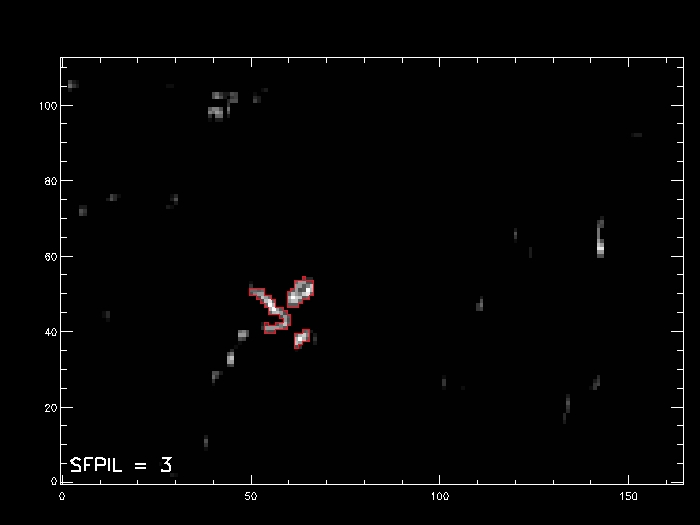
NOAA Active Region 8027
April 9, 1997
Arcades: 0
Cusps: 5
Ejecta: 1
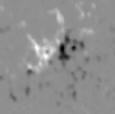
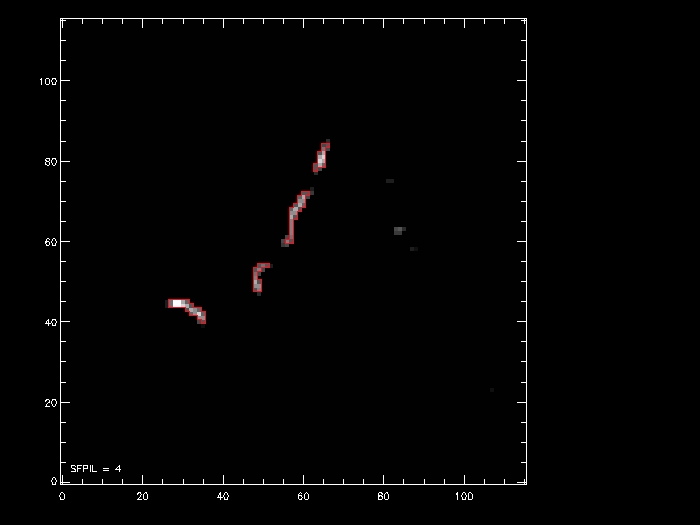
NOAA Active Region 8085
September 13, 1997
Arcades: 0
Cusps: 2
Ejecta: 0
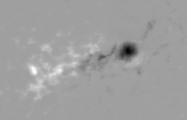
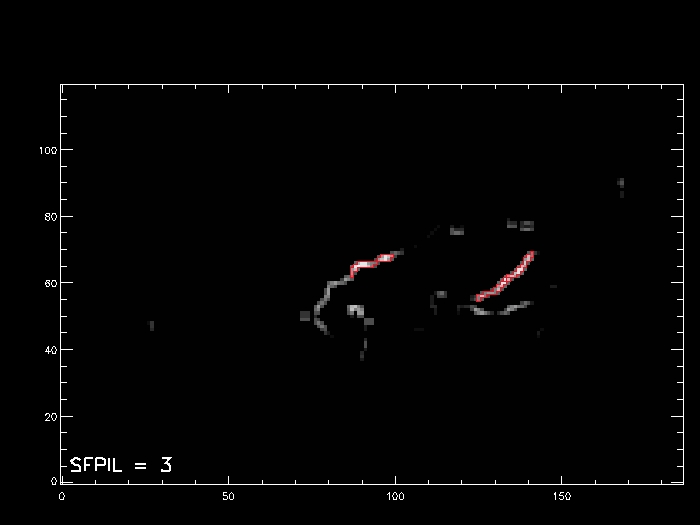
July 1, 2009
What have I been doing the last two weeks?
My project of making movies has ceased to exist. What do SXT pfi movies show when sigmoids erupt? Not much. Out of Masha's list and additional active regions from papers Dr. Canfield gave me, there were only three sigmoids in which the movies began right before the initial brightening and showed some difinitive structure. These movies did not display any new phenomena. The day/night cycle, flare mode, and various filters of SXT made for a very fragmented picture of the development of a sigmoid.
Thus, on to the next project: Is the frequency of eruption of sigmoids greater if the underlying field is quadrupolar?
Movie making was beneficial to this process in a small respect, just because I am familiar with the data base and have documented the frequency of eruption. This past week I have been learning how to determine the number of polarity inversion lines, and thus the number of poles, for each sigmoid in Masha's list using Kitt Peak magnetograms. Since the data set spans from 1991-2001 (and since I am starting this project about halfway into the internship) to ensure uniformity (and to simplify life) I am using a Kitt Peak magnetogram, that Masha has already selected, of the disk when the sigmoid is closest to disk center (There is only about 1 magnetogram/day), so that I do not need to account for a distorted field of view due to solar rotation. I crop these magnetograms so that I have a magnetogram of only the active region.

cropped magnetogram
Then I separate the cropped magnetogram into two maps, one with positive flux and one with negative flux.


Then I assign a value of +1 to all pixels with a positive flux value and a -1 to all pixels with a negative flux value and a 0 to all other pixels.


I convolve each of these new bitmaps with a normalized kernel, so that the regions of flux are blurred.


I multiply these two bitmaps by each other such that only the parts where the blurring overlaps remain. This is the basic mask I will use to determine the number of polarity inversion lines.

mask
I use a tessellation program designed by a previous REU student Alexander Russell to contour regions on my mask. The number of these regions will be the number of polarity inversion lines. There are various parameters in the tessellation program. My mask has values that range from -1 to 0. I plotted histograms to get a general feeling for what these values are so I can set an appropriate threshold since we want to only look at strong field polarity inversion lines.
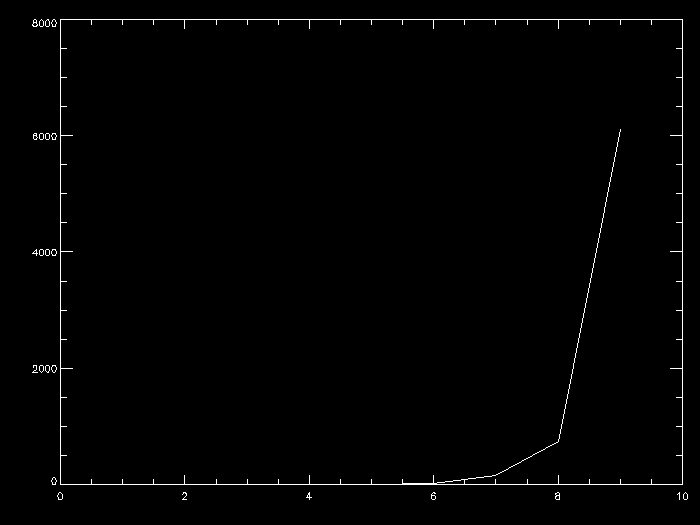
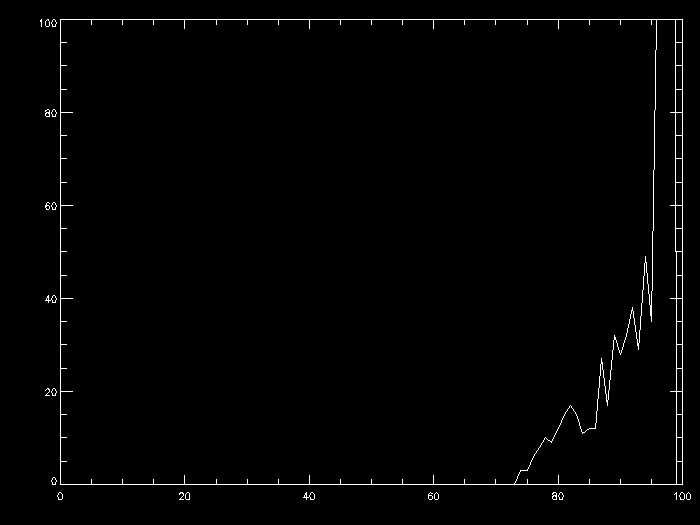
June 19, 2009
Here are the movies I have made so far this week that appear to be promising.
Movie and GOES data from 17-June-92 (movie duration: 14:30:04 - 21:42:52)
Movie and GOES data from 19-October-94 (movie duration: 20:32:12 - 21:20:20)
Movie and GOES data from 20-October-95 (movie duration: 05:22:23 - 06:11:35)
FFI for a sigmoid moving across the disk.
After making so many of these, it has become clear that in general the PFIs detract more than add to the movies. The FFIs allow one to see the evolution of the structure much better.
June 16, 2009
I managed to make a list of sigmoids through 1995 that are potentially "movie worthy". I also managed to make two more movies today, one of which looks like a winner and makes my day not an entire waste of time.
June 15, 2009
Dr. Canfield showed me why I was having trouble with the Java movie in HTML: I forgot to move the .gif files that it calls over the directory. Apparently I have an aversion to the blatantly obvious.
I went through Masha's list and compared it to the GOES data to see which sigmoids might be worth making movies for and compiled my own list. Again, the obvious was not my friend. Masha's list lists the times of cusps and arcades, so more often than not, I want to be looking before this time. So now I am comparing the GOES data to the FFI movies for each sigmoid and trying to figure out what a good time might be to make a movie in relation to these.
June 12, 2009
Success! Going through the Leamon paper and comparing the chosen sigmoids from this list to the GOES daily data coverage, I was able to find a decent data set in which to make a movie of a sigmoid. The previous movies have been lackluster up until this point.
The GOES data shows the sigmoid beginning to erupt during Yohkoh's day around 10:00. I made a movie of this orbit and the previous orbit.
The movie shows that the J-loops of the sigmoid seem to vanish right before eruption.
June 11, 2009
More movies today. I went through my movies from yesterday with Dr. Canfield. I continued making movies today from the list of sigmoids in the Leamon paper.
One of today's fruits of labor:
another sigmoid movie and corresponding GOES daily data coverage for active region 8243 on 6-JUN-98 centered on the event at 05:35.
June 9, 2009
I made a movie on my own today with data from two orbits. Dr. Acton showed me how to remove frames, to use "sswhere" in IDL, and to rescale the movie to clean it up.
Here it is:
sigmoid movie
June 8, 2009
More movie making... I went over the procedure for how to make a movie with Dr. Acton again and learned how to combine data from multiple orbits!
June 5, 2009
Morning:
All the REUs presented their IDL mini-projects. Following this, I went through the journal I made with Dr. Acton yesterday and recreated yesterday's scenario.
Afternoon:
I went to my first weekly solar flare group meeting. The REUs explained their projects and we got to ask any questions we had. I asked about what a magnetic trap is and my basic understanding is that sometimes the poles of a loops are pinchs and so the electrons don't go into the chromosophere but rather bouce back and forth in the loop between the poles. I also learned that flares are classified by flux intensity, and Dr. Longcope drew a good model of magnetic reconnection. It's a great forum to just better understand the fundamentals. Knowing what you are doing and verbalizing what you are doing are two very different things, so I believe this will help me to speak properly, and hopefully intelligently, about the work at hand.
Then Dr. Acton and I went through the process of making a movie again and were able to clean up the process a little.
When I figure out how to insert a movie into html, what we created will appear here!
My program actually works and produces graphs at the end. Whether they have any scientific credibility has yet to be determined...
Problems:
1) Some of the KP magnetograms have a bscale factor of 0, which cannot be correct. Currently I have set these to unity.
2) For 2 of the active regions the tess program returns only one tess'd fragment in the magnetogram and then the program burps. I can either change the threshold values to avoid this or can alter the program so that if there is not both a positive and negative centroid it will just have a default boxcar kernel dimension
3) I don't think that standard threshold values for ALL magnetograms produces realistic numbers of flux fragments and PILs...
There needs to be a cleaner way to display this, but for the time being here is proof I did some work this week:


July 17, 2009
NOAA Active Region 6982
December 26, 1991
Arcades: 0
Cusps: 2
Ejecta: 2



NOAA Active Region 7912
October 16, 1995
Arcades: 1
Cusps: 1
Ejecta: 2



NOAA Active Region 8955
April 17, 2000
Arcades: 0
Cusps: 1
Ejecta: 0



July 10, 2009
NOAA Active Region 7773
September 5, 1994
Arcades: 1
Cusps: 1
Ejecta: 1


NOAA Active Region 7834
February 5, 1995
Arcades: 3
Cusps: 4
Ejecta: 1


NOAA Active Region 8027
April 9, 1997
Arcades: 0
Cusps: 5
Ejecta: 1


NOAA Active Region 8085
September 13, 1997
Arcades: 0
Cusps: 2
Ejecta: 0


July 1, 2009
What have I been doing the last two weeks?
My project of making movies has ceased to exist. What do SXT pfi movies show when sigmoids erupt? Not much. Out of Masha's list and additional active regions from papers Dr. Canfield gave me, there were only three sigmoids in which the movies began right before the initial brightening and showed some difinitive structure. These movies did not display any new phenomena. The day/night cycle, flare mode, and various filters of SXT made for a very fragmented picture of the development of a sigmoid.
Thus, on to the next project: Is the frequency of eruption of sigmoids greater if the underlying field is quadrupolar?
Movie making was beneficial to this process in a small respect, just because I am familiar with the data base and have documented the frequency of eruption. This past week I have been learning how to determine the number of polarity inversion lines, and thus the number of poles, for each sigmoid in Masha's list using Kitt Peak magnetograms. Since the data set spans from 1991-2001 (and since I am starting this project about halfway into the internship) to ensure uniformity (and to simplify life) I am using a Kitt Peak magnetogram, that Masha has already selected, of the disk when the sigmoid is closest to disk center (There is only about 1 magnetogram/day), so that I do not need to account for a distorted field of view due to solar rotation. I crop these magnetograms so that I have a magnetogram of only the active region.

cropped magnetogram
Then I separate the cropped magnetogram into two maps, one with positive flux and one with negative flux.


positive flux map
&
negative flux map
Then I assign a value of +1 to all pixels with a positive flux value and a -1 to all pixels with a negative flux value and a 0 to all other pixels.


positive bitmap
&
negative bitmap
I convolve each of these new bitmaps with a normalized kernel, so that the regions of flux are blurred.


positive convolved bitmap
&
negative convolved bitmap
I multiply these two bitmaps by each other such that only the parts where the blurring overlaps remain. This is the basic mask I will use to determine the number of polarity inversion lines.

mask
I use a tessellation program designed by a previous REU student Alexander Russell to contour regions on my mask. The number of these regions will be the number of polarity inversion lines. There are various parameters in the tessellation program. My mask has values that range from -1 to 0. I plotted histograms to get a general feeling for what these values are so I can set an appropriate threshold since we want to only look at strong field polarity inversion lines.

Histogram, -1:0, 10 bins

Histogram,
-1:0, 100 bins
Since the cropped magnetogram in this
study has dimensions of 90 x 78 one would expect around 7000 counts
which is what is seen here. Most of non-zero valuesare between 0
and 0.13 so it would be wise to set my threshhold to something of at
least 0.06. The area theshhold depends on how large of a region I want
to consider to be a region, which is scaled to the area of the sun. I
made my area threshold 6 pixels. The saddle theshhold determines which
regions are joined together above a certain threshhold. I set the
saddle threshhold equal to the tessellation threshhold.
Here is what I have so far (I still need to fiddle with the parameters more):

Tessellated mask (spatial units)
Here is what I have so far (I still need to fiddle with the parameters more):

Tessellated mask (spatial units)
June 19, 2009
Here are the movies I have made so far this week that appear to be promising.
Movie and GOES data from 17-June-92 (movie duration: 14:30:04 - 21:42:52)
Movie and GOES data from 19-October-94 (movie duration: 20:32:12 - 21:20:20)
Movie and GOES data from 20-October-95 (movie duration: 05:22:23 - 06:11:35)
FFI for a sigmoid moving across the disk.
After making so many of these, it has become clear that in general the PFIs detract more than add to the movies. The FFIs allow one to see the evolution of the structure much better.
June 16, 2009
I managed to make a list of sigmoids through 1995 that are potentially "movie worthy". I also managed to make two more movies today, one of which looks like a winner and makes my day not an entire waste of time.
June 15, 2009
Dr. Canfield showed me why I was having trouble with the Java movie in HTML: I forgot to move the .gif files that it calls over the directory. Apparently I have an aversion to the blatantly obvious.
I went through Masha's list and compared it to the GOES data to see which sigmoids might be worth making movies for and compiled my own list. Again, the obvious was not my friend. Masha's list lists the times of cusps and arcades, so more often than not, I want to be looking before this time. So now I am comparing the GOES data to the FFI movies for each sigmoid and trying to figure out what a good time might be to make a movie in relation to these.
June 12, 2009
Success! Going through the Leamon paper and comparing the chosen sigmoids from this list to the GOES daily data coverage, I was able to find a decent data set in which to make a movie of a sigmoid. The previous movies have been lackluster up until this point.
The GOES data shows the sigmoid beginning to erupt during Yohkoh's day around 10:00. I made a movie of this orbit and the previous orbit.
The movie shows that the J-loops of the sigmoid seem to vanish right before eruption.
June 11, 2009
More movies today. I went through my movies from yesterday with Dr. Canfield. I continued making movies today from the list of sigmoids in the Leamon paper.
One of today's fruits of labor:
another sigmoid movie and corresponding GOES daily data coverage for active region 8243 on 6-JUN-98 centered on the event at 05:35.
June 9, 2009
I made a movie on my own today with data from two orbits. Dr. Acton showed me how to remove frames, to use "sswhere" in IDL, and to rescale the movie to clean it up.
Here it is:
sigmoid movie
June 8, 2009
More movie making... I went over the procedure for how to make a movie with Dr. Acton again and learned how to combine data from multiple orbits!
June 5, 2009
Morning:
All the REUs presented their IDL mini-projects. Following this, I went through the journal I made with Dr. Acton yesterday and recreated yesterday's scenario.
Afternoon:
I went to my first weekly solar flare group meeting. The REUs explained their projects and we got to ask any questions we had. I asked about what a magnetic trap is and my basic understanding is that sometimes the poles of a loops are pinchs and so the electrons don't go into the chromosophere but rather bouce back and forth in the loop between the poles. I also learned that flares are classified by flux intensity, and Dr. Longcope drew a good model of magnetic reconnection. It's a great forum to just better understand the fundamentals. Knowing what you are doing and verbalizing what you are doing are two very different things, so I believe this will help me to speak properly, and hopefully intelligently, about the work at hand.
Then Dr. Acton and I went through the process of making a movie again and were able to clean up the process a little.
When I figure out how to insert a movie into html, what we created will appear here!

